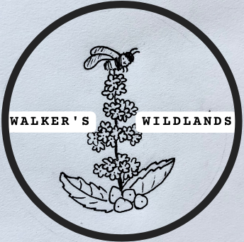Conservation through Cultivation
California has the highest plant biodiversity of any state in the Continental U.S. Walker’s Wildlands is dedicated to preserving it by growing California Native plants for the home garden, habitat restoration, and anywhere in between.
Native plant landscaping is the cutting edge, using plants that grow wild in the local area to recreate functional habitat, preserve rare and endangered plants, and sustain the wildlife that relies on them, while still providing a beautiful aesthetic. Native plants are also the economic choice, as they require less water, fertilizer and pesticide than a traditional garden.
At Walker’s Wildlands, we grow a variety of California Native plants, including annual and perennial wildflowers, Chaparral and coastal sage shrubs, succulents, trees and wetland/pond plants. We also grow a selection of non native edible garden herbs, fruits and vegetables. All plants are responsibly sourced and grown above industry standards, providing even backyard gardeners with genetically diverse plants.
Visit our instagram page for more fun facts and photos.
Contact us for info on landscaping.
Our Inventory
NOTICE – Walkers Wildlands has moved to a new location! Our new nursery site in Fallbrook at 3425 Alta Vista Dr will be open soon for retail, as we are under construction now! We are open for appointments until retail opening early 2025. Please contact us for info on plants and consultations @ 760 783 6140 or by email @ Wilsonesque@outlook.com, and instagram @ Walkerswildlands
Low Water needs
From weekly to only natural rainfall
No pesticide or fertilizer needs
Native plants are adapted to local conditions
Preserve Biodiversity
Help us spread rare and endangered plants
Huge Savings
Lower maintenance, lower water bill, more birds and butterflies
Preserving Natural History
Much of what people think San Diego’s habitats look like comes from lands that have been degraded over time by invasive species. Invasive plants fill in areas that have been disturbed, and leave only a handful of weeds where there may before have been hundreds of species, leading towards local extinctions of native species.
Removing invasive species and planting species native to that location combats this trend, provides food and habitat for wildlife, and protects the plants unique to San Diego.
This video was created for the California State Parks by our Historical Consultant Madeleine Meyer.
Garden favorites

One of the most popular native flowers, sticky or bush monkeyflower, is a low water high impact shrub. Naturally coming in red or orange varieties, This is a great low water choice that provides color in fall, winter or spring depending on local climate.
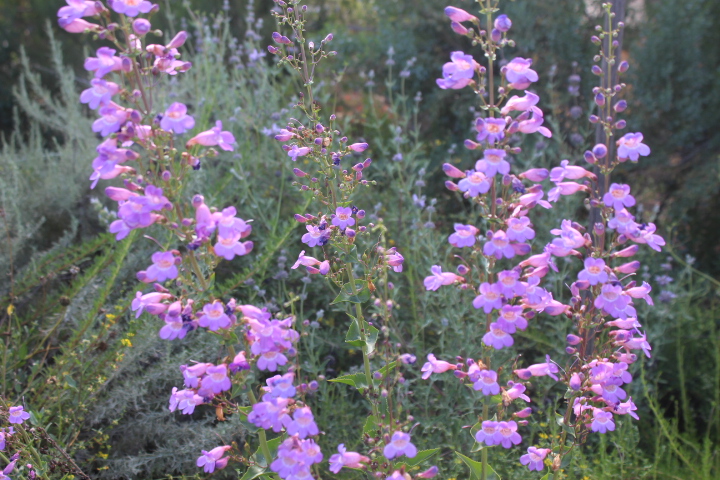
An exceptionally showy flowering shrub, typically less rounded and bushy than other Chaparral or coastal sage shrubs, and not as long lived, but easily re-seeds nearby. It will definitely be a focal point in most gardens around spring, with larger specimens exceeding shoulder height with hundreds of blooms. Great hummingbird attractant and likely host for many butterfly and moth species
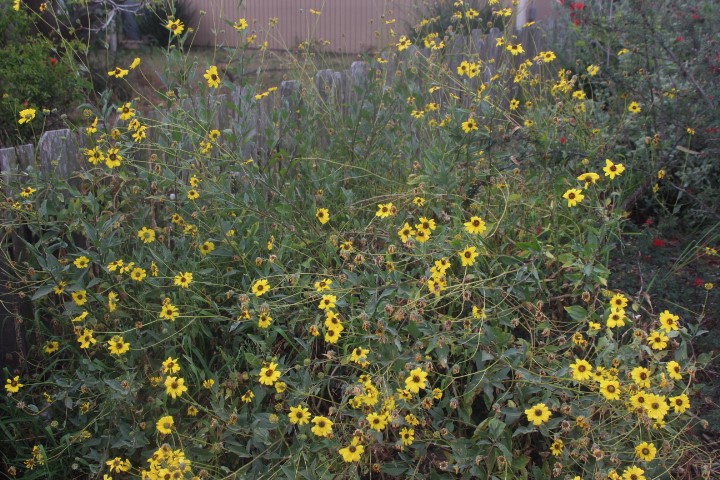
A wonderful beginner’s garden plant, Encelia grows quickly and is forgiving, tolerating hot weather and garden watering conditions. This plant is often the first to re-colonize disturbed habitat. If it looks bedraggled or dry/brown in summer, simply cut it down to the ground and it will grow right back, providing free native mulch.
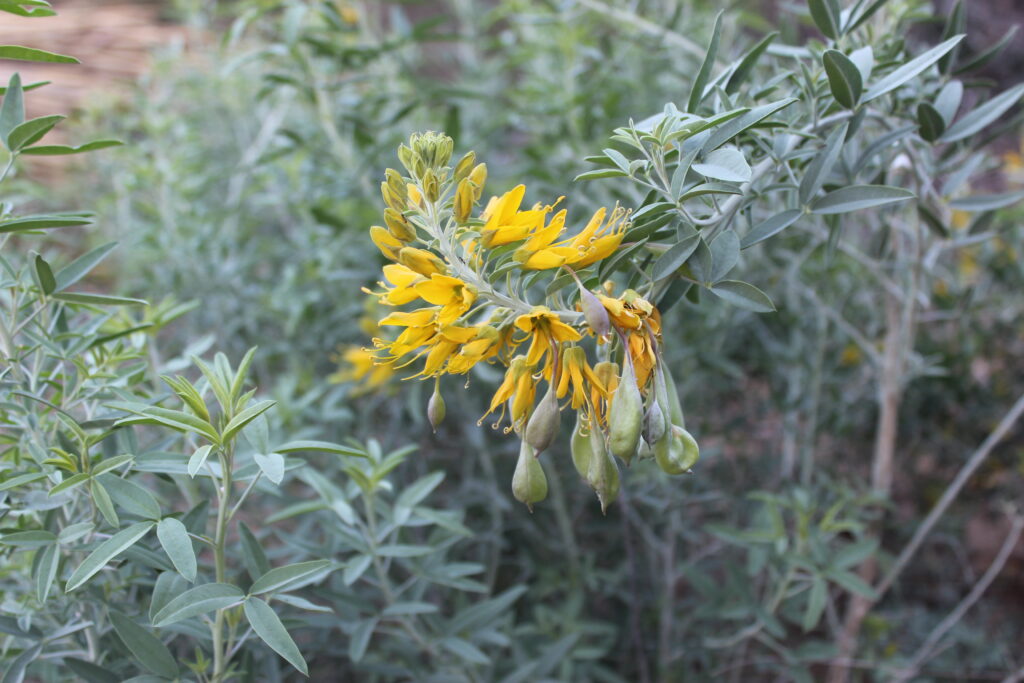
Bladderpod is a garden staple, tough , drought resistant and evergreen. Flowers for many months of the year and the flowers are great for attracting hummingbirds. Bright flowers give way to the equally showy pods that are its namesake. Tolerant of summer water and garden conditions, grows wild from Fresno/Bakersfield area to Baja Mexico.
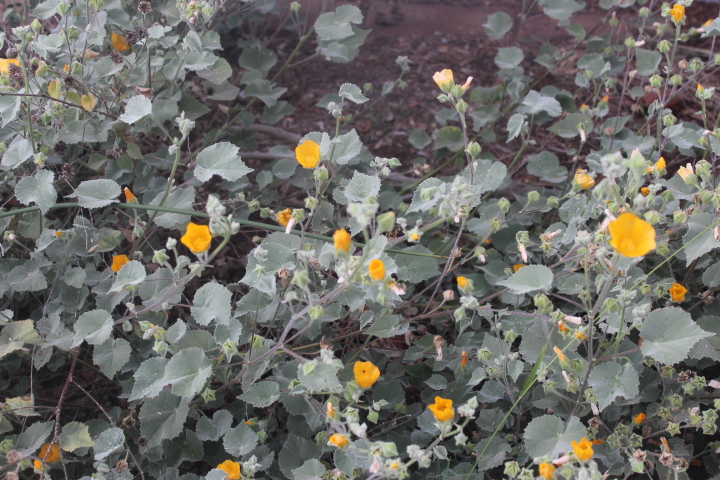
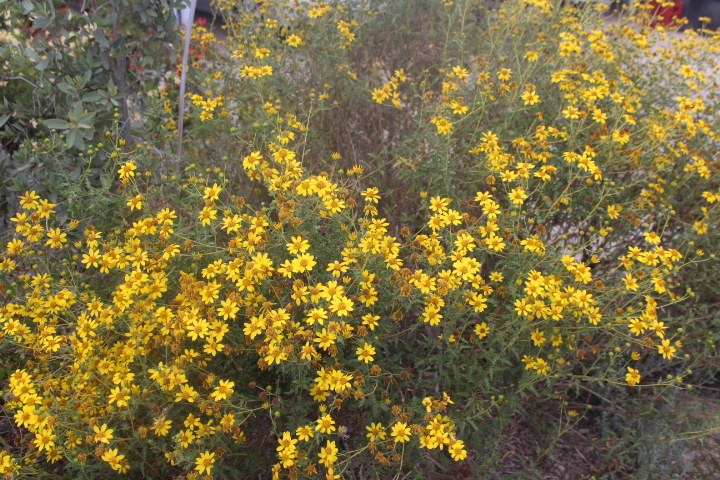
Palmer’s Desert mallow, or superstition mallow, while not local to San Diego but rather inland deserts, is still a beautiful accent plant. Evergreen with downy soft leaves, this a good pick for that blazing hot spot of the property where nothing will grow. Treat it like a desert plant however,as it’s a Mojave desert native, and don’t water it often after establishment.
A San Diego endemic species that happens to be excellent for garden conditions. Evergreen, tough and made for full sun conditions, it will still stay green with just once a month or less watering. Trim off dead flowers for another round of blooms. A great choice for almost any San Diego garden, and to showcase local species.
Uncommon/Rare & Endangered Species
Walkers Wildlands exists in order to preserve and recuperate our local environment from the bottom up, through the plants that make up local habitats. To this end we try our best to provide native plant species that are less common, including endangered species. We can also offer our advice on what rare and endangered species might be most appropriate and impactful for your area.

While not rare in the wild, Coyote gourd is not commonly sold due to its dormancy in hotter months, and funky scent. However its gourds are edible when very young ( ping pong sized or smaller) and it is a very tough plant suitable for dry, low water conditions. Also, as a host for the Glorious Squash Vine Borer Moth how could you not grow it?
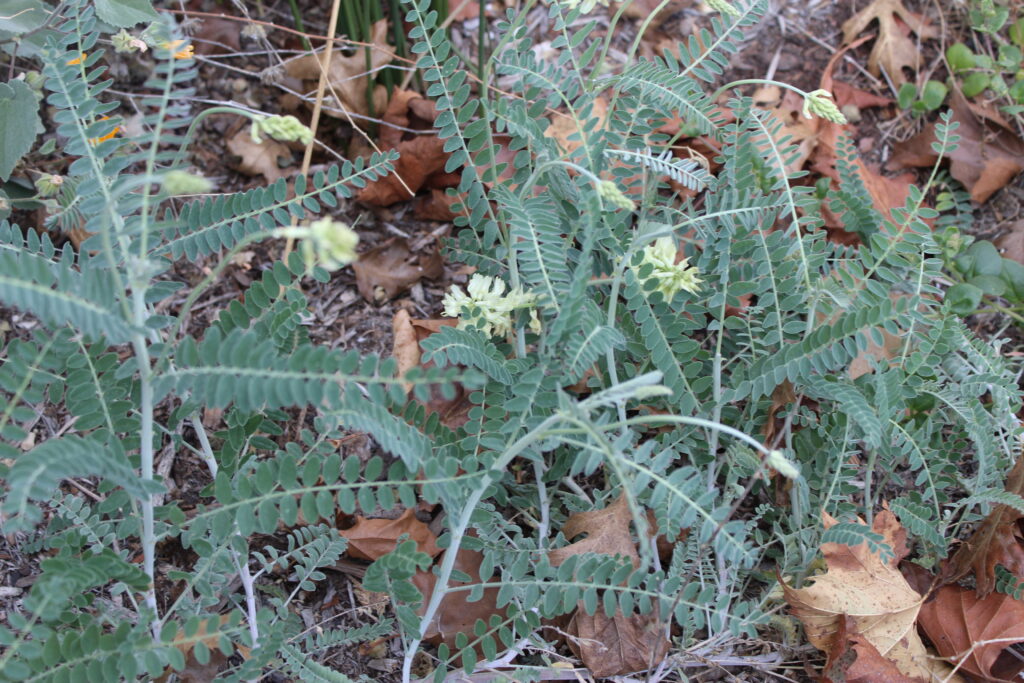
A perennial herb native to coastal areas of southern California, offers cream white flowers and a beautiful texture as well as hosting multiple moth and butterfly species. Like many others in coastal Southern California, it is threatened by development and has become rare.

A unique succulent species with delicately branched fleshy leaves, and large flowers, a visual combination of succulent and sunflower seemingly concocted in a lab. Native to a small range of southern and Baja California, this a rare and threatened plant due to coastal development.
Monardella Viminea – Willowy Monardella – coming soon
Monardella Viminea is a state and federally endangered species that is native to a small area of San Diego and has a wonderfully minty scent. Although it exists in the wild in barely more than a few canyons, it is relatively easy to grow at home and an a great plant for pollinators.

With similar flowers to other penstemon, but a much different form as a chaparral shrub that commonly reaches 6ft in height. It is also fairly long lived and will drop leaves in dry periods, typically summer or after flowering. A beautiful shrub but not carried as commonly as its relatives as it prefers fairly dry conditions after getting established.
Geophytes/Seasonals
Geophytes are plants that retreat below ground seasonally, with foliage on the surface wilting and, above ground at least, the plant appears to die. These include blbs but also plants with rhizomes or tubers that allow them to survive undeground until the next season. Most of the geophytes in San Diego go dormant in summer and sprout forth in spring, but there are other seasonal variations as well. Annual wildflowers are also here depending on the time of year, as they live typically for a few months only before releasing their seed, which they rely on to bring a new generation the following year.
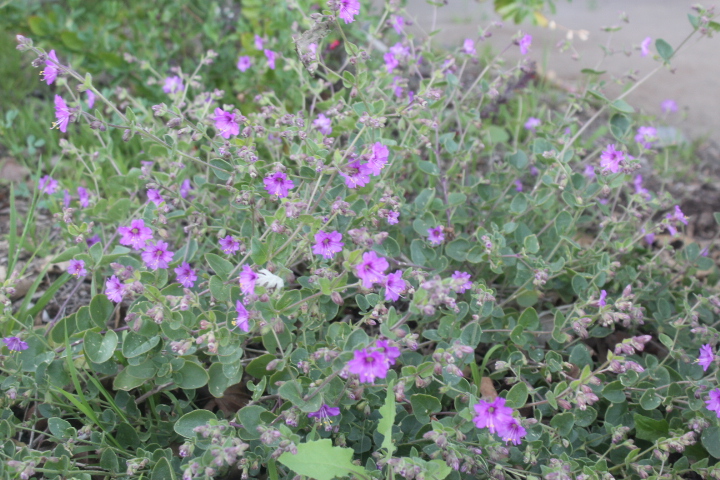
Mirabilis is a fairly common sight in the chaparral and coastal sage communities where it grows in between rocks, under large shrubsand generally in areas of part shade to full sun. Another common name is four o clock, as the flowers are not open in mid-day, but rather open in the morning and afternoon instead. Keep in consideration for placement that it is summer dormant.
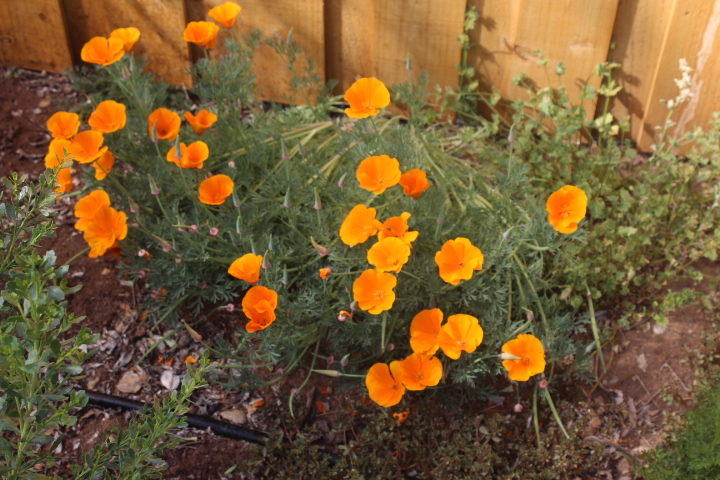
Winning in a landslide in 1890, the California poppy became the state flower of California. With a huge range growing far outside the state itself, it is adaptable and easy to grow, readily re-seeding and coming back subsequent years after sowing or planting. Great for pollinators and seasonal color that comes back reliably.
